Bwiti
Bwiti is a spiritual movement in Gabon (the Tibet of Africa), known for its highly effective tools for kundalini awakening and spiritual growth. It has been kept a secret for a very long time until recently when people from abroad started to realize the true power of these tools. In Costa Rica and a few other countries, they have begun sharing these secret Bwiti initiations in a condensed and lighter form.
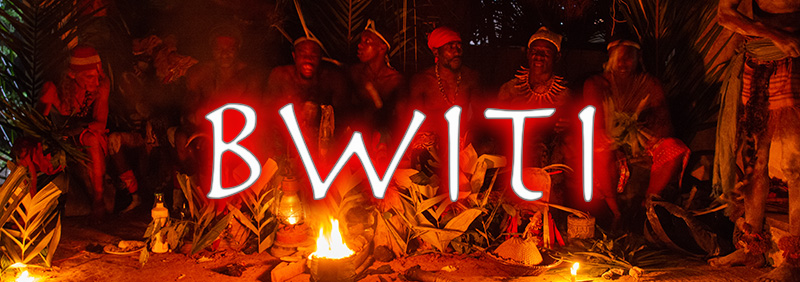
Bwiti is known by the local villagers in Gabon as the healer of physical, mental, emotional, and spiritual problems and the teacher of wisdom. The end result of the Bwiti ceremony is that you no longer fight against life but flow with life or as life. Or simply enjoy and be happy in life. It is normally a rite passed on from parents to their children.
Outside Gabon, Bwiti ceremonies are known as the most powerful and intense spiritual healing one can experience on the planet, but less than 10 groups share this knowledge. It is also known in the West as a drug-addiction rehabilitation path.
As the most powerful spiritual movement on the planet, I would like to dedicate this whole page to Bwiti.
In a nutshell, a Bwiti ceremony prepares and guides a participant (a Banzi) into full kundalini awakening. If successful, many decades of spiritual practice and preparation for full kundalini awakening occur in a matter of hours. However, this initiation is very intense and not without risk.
Click here to go directly to the list of Bwiti Temples on the planet.
So let's start at the beginning.
Bwiti is a spiritual practice originating from the Babongo pigmy tribes of Lope national forest in Gabon about 1000 years ago. They passed it on to the Apindji and Mitsogho people, who turned it into Dissumba Bwiti. Later on, this knowledge was passed to the Fang, Eshira, Kota, and Punu people of southern Gabon.
It is now recognized as one of the 3 main religions in Gabon.
Bwiti's incorporation of Christian aspects was a result of Christian missionaries' efforts to destroy the religion and replace it with Christianity, with the approval of the French colonial government at the time. In response, Bwiti villages adopted Christian symbols and practices, pretending to be converted into Christians, but secretly continued practicing their Bwiti religion.
Beautifully said by Nengue Me Ndjoung Isidore: "The Catholic church is a beautiful theory for Sunday, the iboga, on the contrary, is the practice of everyday living. In church, they speak of God, with iboga, you live God."
It wasn't until 1960 when President Leon M’ba defended the Bwiti religion and stopped the Christian suppression of the Bwiti religion.
All initiations in Gabon are parallel to Dissoumba, the generative mother of all initiations. Bwiti Missoko has several branches, including MissokoNgondet, Missoko Miobet, Missoko Sengedia, and Missoko Moutakombi, which always begin with the moussussu program, a purification of the body in the forest using iboga for some.
Dissoumba Bwiti is more focused on protection and is considered one of the purest forms of Bwiti with less Christian influence. Missoko Bwiti and Niobe are offshoots of Dissumba Bwiti and are less intense.
Outside of Gabon, such as in Costa Rica or the Netherlands, the ceremonies are shorter and less intense compared to Missoko, but still modeled after the Missoko Bwiti tradition if done correctly.
Who are the Bwiti tribes in Gabon?
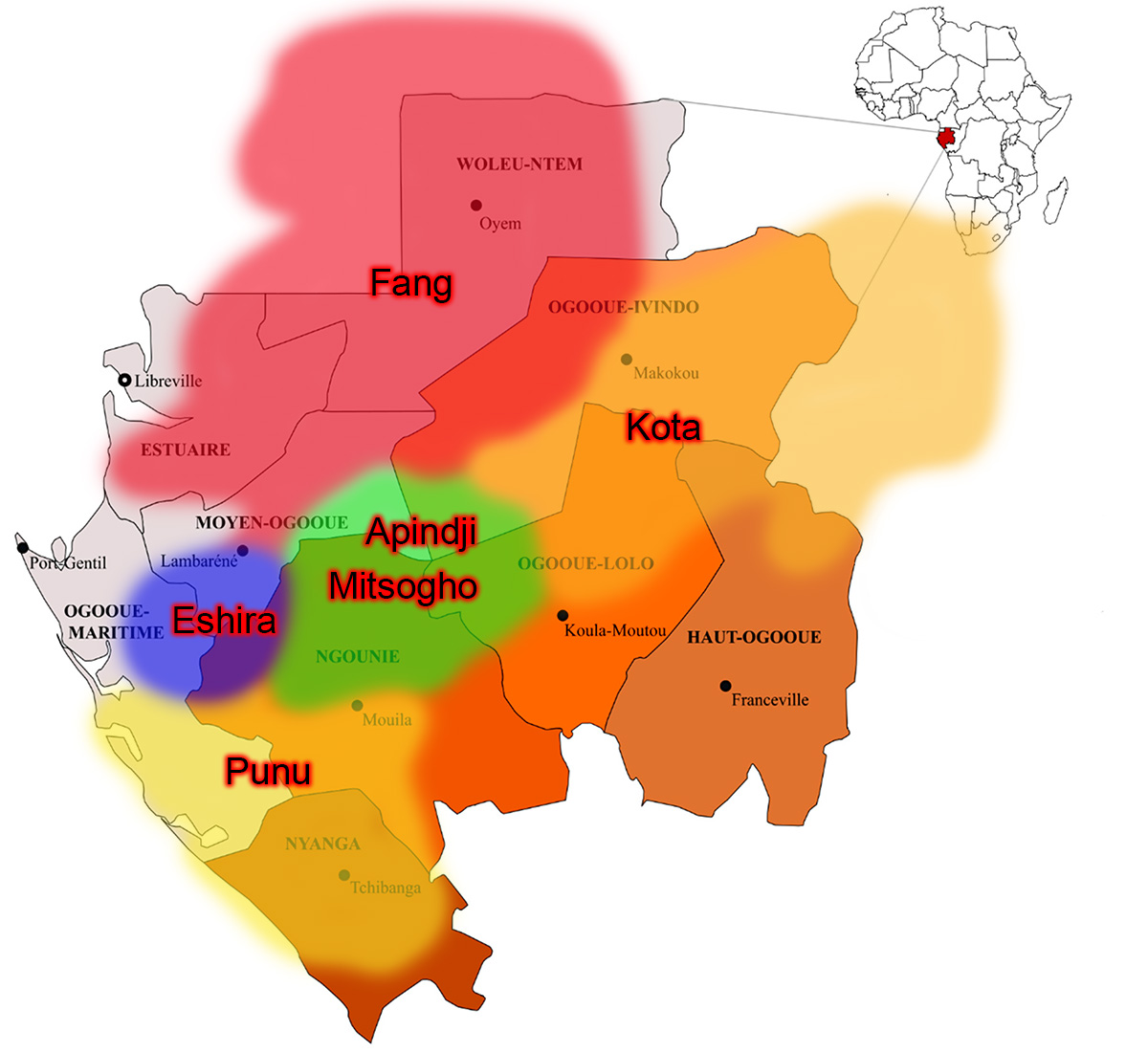
Bwiti tribes
Who are the other ethnic groups in Gabon?
In bold are the provinces of Gabon.
| Estuaire | Haut Ogooué | Moyen Ogooué | Ngounié | Nyanga | Ogooué-Ivindo | Ogooué-Lolo | Ogooué-Maritime | Woleu Ntem |
|---|---|---|---|---|---|---|---|---|
| Croc | Téké | Apindji | Akélé | Bapunu | Croc | Banzebi | Oroungu, Nkomi | Croc |
| Omiene Group | Mbahouin | Galoa | Banzebie | Vili | Bakota | Puvi | Lumbu | Haoussa |
| Benga | Obamba | Croc | Mitsogho | Lumbu | Mahongue | Akélé | Baka | |
| Akélé | Bakaningui | Akélé | Massango | Boungôme | Massango | |||
| Simba | Nzebi | Vili | Bavarama | Kwele | Aduma | |||
| Beseki | Ndoumou | Enengá | Bapunu | Baschiwe | ||||
| Seke | Ndassa | Bakota | Apindji | Basimba People | ||||
| Ndumu | Mbeté | Bavungu | Akélé | |||||
| Awandji | Guisir |
Who are the Mitsogho Bwiti?
The Mitsoghos are the people of the Massifs de Chaillu mountains in the Ngounié province of Gabon. Tsogho is their language, hence the name Mi-Tsoghos (where the prefix "Mi" means plural). They are a relatively small ethnic group revered and feared for their abilities in conjuring spirits from the afterworld. While Missoko Bwiti is not the same as the Mitsogho Bwiti tribe, one can say they started the Missoko ceremonies among other influences.
The Mitsogho Bwiti people may represent the first non-Baka Gabonese of the entire area (Baka are pygmy tribes from other African countries that migrated into Gabon over time). This can be extrapolated from the widespread usage of Mitsogho words and customs in the Bwiti ceremonies. Bwiti is a Mitsogho name and is based on the magic powers of "the sacred wood" or iboga, which is also a Mitsogho word meaning healing-ibo and wood-ga.
Nearly all healing ceremonies in Gabonese traditional culture involve the singing of Mitsogho songs. Mitsogho words are so well known throughout the entire country that at one point the government considered making Mitsogho the national ethnic language.
The majority of modern Mitsoghos live in Libreville and Mouila; however, their roots trace back to the tropical mountain forests just west of where the Ngounié river meets the Ogoué river to where the Ogoulou river meets the Ngounié river—see map below. The most prominent old village sites were located near the 70-mile-long Ikobé valley.
This small but fierce group of people was the last ethnic group to be defeated by the French colonists (around 1940). In long-lived Mitsogho lore, a warrior named Mbombet A Gnaghé hid out in the Ikobé valley to stage guerrilla attacks against the French military. Mbombet supposedly had magical powers but was ultimately betrayed by a woman.
The modern-day offspring who can be traced directly back to Mbombet still hold special positions within the traditional Mitsogho tribal authority. They are usually celebrated magicians and healers.
In a nutshell, iboga ceremonies evolved from the Babongo tribes into Dissumba Bwiti and merged with the Apindji and Mitsogho tribes, turning into Bwiti.
The Mitsogho (specifically the Etsogo na Pindzi) initiated the Fang people into Bwiti, who, in turn, initiated the Eshira people. The Fang incorporated the Byeri, which is both a physical object (the reliquary guardian statue) and a spiritual practice within Gabonese Fang culture. The Fang people believed their ancestors continued to play an important role in their lives, offering protection and guidance from the spirit realm. By creating and maintaining the Byeri statues, they maintained a connection with their ancestors and sought their assistance when needed.

In addition to serving as spiritual intermediaries, the Byeri statues were also used in divination practices. An Nganga would use the statue to communicate with the spirit world and gain insight into the future or the cause of an illness or misfortune. In Missoko, the musical instruments carry these energies even further.
To recapitulate, Dissumba Bwiti is compared to the roots of a tree, where the branches are the different ramifications (denominationalizations) of Dissumba, mostly caused by Christian suppression. Missoko Bwiti is considered one of the most original forms of Bwiti practices, closest to Dissumba and least influenced by Christianity or mixed with Byeri.
Here are the 4 main ramifications (denominationalizations) of Dissumba:
Missoko Ngondet / Ngonde
They specialize in consultation, diagnostics, and healing. Much value is given to the visions during the ceremony.
Missoko Miobet / Mioba
They focus strongly on healing with plants, herbs, and trees along with or without the iboga root and spend less time in consultation and diagnostics. It is the knowledge branch.
Missoko Senguedia
They focus on protection and healing, especially from parasitic energies, but keep the consultation short and emphasize energetic healing and protection.
Missoko Moutakombi
The founder, Moutakombi, believed the other 3 Missoko were not genuine. Upon verification, he realized his thoughts were incorrect, but since the movement had started, he could not stop it. This branch is often called the Bwiti of knowledge and creation.
Denominationalization refers to when a single religion splits into multiple smaller groups or denominations that have slightly different beliefs or practices.
Each of these 4 branches has unique ways of working with plants and practices, such as different prayers within the Bwiti tradition.
Here are some of the different rite names associated with the 4 Missoko Bwiti branches:
Here are the different rite names associated with the 4 Missoko Bwiti branches:
| Rite Name | Description |
|---|---|
| Abanji | Traditional Bwiti rite among the Myene people (aka Dyumba, Galwa, Mpongwe, Omyene people). Performed for both men and women. |
| Assumega / Assoumenga | Traditional Bwiti rite among the Fang people. |
| Dissumba Muruna Mata | Dissumba of Elevation (Vungu people, including Dipanda, the spiritual leader of the Vungu). |
| Essum / Essume | Traditional Bwiti rite among the Fang people. |
| Elombo / Ilombo | Traditional mixed Bwiti rite (for both men and women) using fresh iboga. Focused on visuals and visions during the ceremony. |
| Loro | No details available. |
| Irina (Erina) | Mabandji Bwiti rite for both men and women. Medicinal Bwiti. |
| Mabandji | Traditional Bwiti rite among the Mitsogo, Eshira (Shira), Puvi, and the Bapunu (Punu) people. Performed for both men and women. |
| Mboumba Yano | Water spirit initiation, a mixed rite for both men and women. |
| Ndeya na Dissanga (Kanga) | Traditional Bwiti rite reserved for men in the Dissoumba branch. |
| Ndzembe | Traditional Bwiti rite for men among the Myene people. Medicinal Bwiti. |
| Niembet | Traditional Bwiti rite for women among the Mitsogo, Puvi, Massango, and Apindji people. |
| Ombwiri | Dissoumba rite. |
| Omboudi / Ombud | Traditional Dissoumba Bwiti rite for men among the Nzebis people. |
Ngondo is the name for village Missoko. Ombwiri is the name for Medicinal Bwiti often practiced without iboga. Mosusu is a forest cleansing ritual, also without iboga. Here are some other names associated with Ombwiri: Ayizet, Ekongui, Eliba Mbongo and Mpunga, Emando, Enanga, Erindji, Mfoua Bongo and Aganga, Mombaiano, Nigabembe Kongzakam, Okana, and Ologue.
Another Dissumba ramification is the Bwiti medicinal (Maganga) path without iboga, called Ombwiri (Ni-embe), which includes the following practices:
- Mombaiano (Many Christian elements, such as with Mama Jeje).
- Maboundi: The name given for the Missoko women initiation.
- Mueri initiation: This is a hazing ritual. STAY AWAY FROM THIS INITIATION. Hazing refers to any activity or behavior used to humiliate, intimidate, or embarrass individuals. In Bwiti, it is sometimes done to bring children into adulthood and involves circumcision and beating with sticks. Avoid this practice.
What to expect in a Bwiti ceremony?
A standard Missoko ceremony takes between 7 and 15 days, depending on the village. The two most commonly visited Bwiti ceremonies in Gabon are Ebando in northern Libreville and Moughenda between Libreville and Lambarene. These places are more set up for Westerners with mosquito nets and fans, but they are also more expensive.
A full initiation costs €4,400 at Ebando and more at Moughenda’s village. Other options, like Mama Aline or Assossa, cost around €2,000 for a full initiation. More info here. My personal favorite is Mama Aline's place for many reasons, but you should feel who resonates best with you.

Mama Aline
A Bwiti ceremony usually starts with the first few days spent relaxing, learning, and getting to know each other. You will also pay for the ceremony during these days. Cash is difficult to withdraw from ATMs in Gabon, as most do not accept Mastercard, AMEX, or local bank cards. It’s better to take cash and exchange it at the airport. VISA cards work better. I recommend using Remitly for transferring money into Gabon (e.g., UBA Bank Libreville). Taking cash into Africa is not as daunting as it may seem.
These initial relaxing days are important to build trust with the team and to ensure that participants are sober, drug-free, and well-rested. Specific healthy foods are consumed for preparation, often including meat and fish. It is recommended to abstain from sex, drugs, alcohol, and caffeine for at least 20 days prior to the initiation.
Around day 3, the ceremony begins with a questionnaire and confession (ayebe), a one-on-one meeting with the nima (shaman/ceremony leader). This is followed by the Efulu, a fire and smoke bath lasting about 2 hours with music. Participants are covered with blankets over a fire/smoke pit. This intense experience helps to clear the items confessed during ayebe and release negative energies.
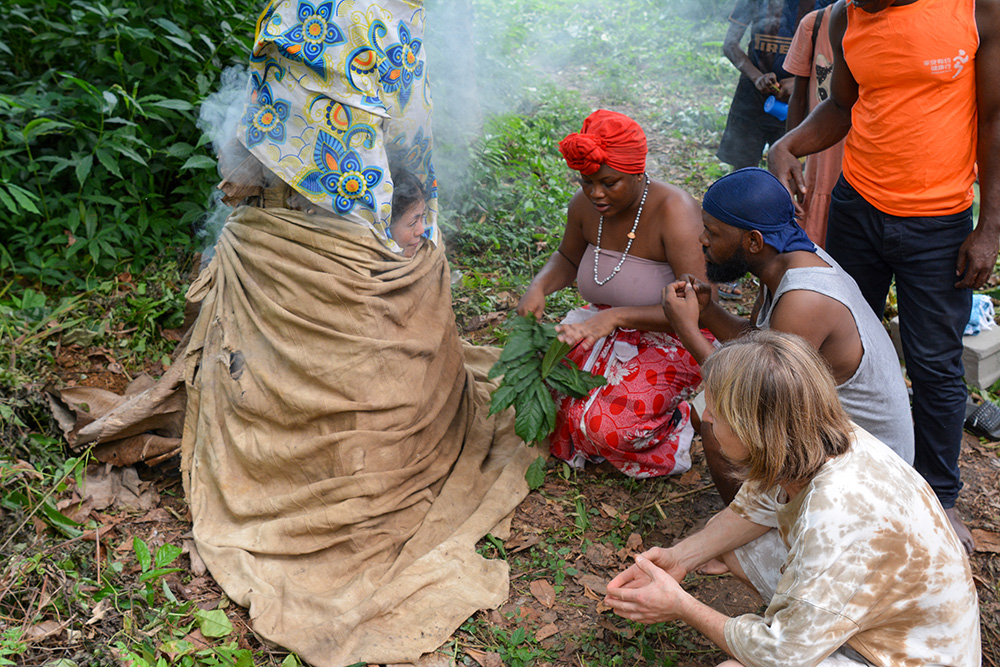
Next is the Mosusu, a water cleansing ceremony involving local herbs, which may or may not include iboga. It is conducted deep in the jungle near a river, accompanied by music and fire. The cleansing includes a ritual with Ocume leaves and a fire cleanse using a Mupetou (fire stick).

After the river cleansing, participants change into ritualistic clothing, are painted white, and may receive their first spoon of iboga if the village includes it in the Mosusu.

The red feather placed in front of your third eye is a Bwiti feather (known as Ase Kos) from a grey parrot. It facilitates communication with the spiritual realm and guides you there during the main ceremony.
As a side note, iboga is never given in capsules because it needs to mix with saliva to work effectively. When taken in capsules, the energy reduces by 50% or more. The best way to consume iboga is in its fresh form, as it numbs the mouth and small intestines, reducing taste issues and the likelihood of vomiting. Fresh iboga works faster, penetrates deeper, and finishes sooner, leaving you less exhausted the next day.
The following day, you may drink emetic tea (such as mequisa) made from forest bark and leaves known to the Nima. This tea induces vomiting, bringing relief from nausea. The process also allows the Nima to observe your purging and determine if there are any blockages. If you cannot purge, the tea might cause a slight headache but nothing severe. This step may occur earlier in the ceremony as well.
Is it better to purge in a Bwiti ceremony or not? The answer varies. The longer you work with the rootbark, the deeper it can cleanse. In many Bwiti ceremonies, purging is expected, and the Nima inspects it to ensure the process goes smoothly. However, at places like Mama Aline’s, where fresh iboga is used, purging is less common because fresh iboga works differently and more efficiently.
In Missoko ceremonies, dry powder is used, and participants usually purge. If someone cannot purge, it may indicate withheld secrets or guilt. However, taking a lower amount of iboga (e.g., 50 grams at Ebando compared to 300+ grams in Dissumba) might allow participants to avoid purging, and that is perfectly fine. Let your body decide if purging is necessary; forcing it out of fear can hinder the process. Some participants never purge during the entire ceremony and still have transformative experiences.
On the day of the initiation, participants often help clean the temple (called "aben" in Bwiti). At Ebando, participants also paint the sacred ceiba tree of life in blue, though this practice is not performed at Moughenda. At Ebando, you might also receive sananga drops (called Makwezy or Ebama) in your eyes to help integrate visuals with the rootbark. Most other places do not include this step.
Meanwhile, the village prepares the iboga rootbark that the bandzi will consume during the ceremony. The iboga roots, freshly pulled or harvested earlier, are cleaned, cut into large pieces, then smaller ones. The skin is removed, and the white pulp is scraped off and collected in a container.

Iboga shrub of 28 years old from Mont Crystal, north Gabon





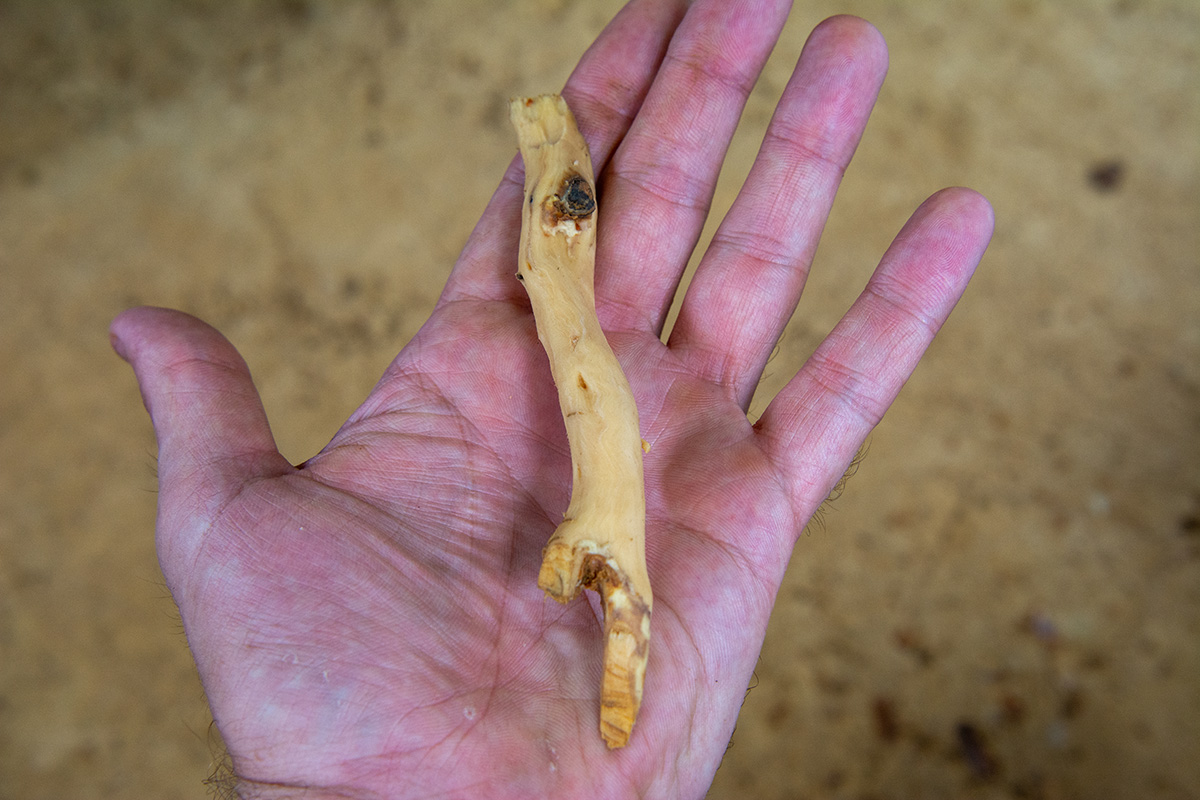
The hardwood that remains is not used.
Fresh iboga is the best form to use in ceremonies. The dried powder works slower and longer and is less effective at clearing karma compared to fresh iboga. Gabon is home to the most potent iboga, while Cameroon and other locations grow less powerful varieties. Age is also important—iboga bushes can be used from 7 years old, but the best ceremonies use bushes at least 15 years old. Older iboga is better, but overly mature iboga can be too bitter and cause excessive vomiting when dried. However, very old fresh iboga, like the one below, is ideal.

60-year-old fresh iboga root from Dousala
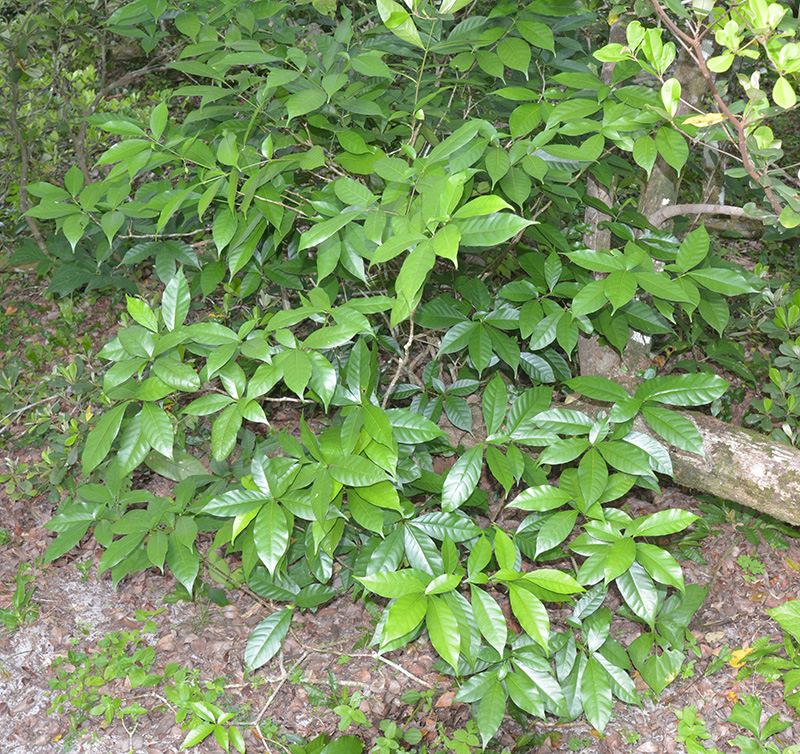
10-year-old iboga from Seta Cama, very powerful
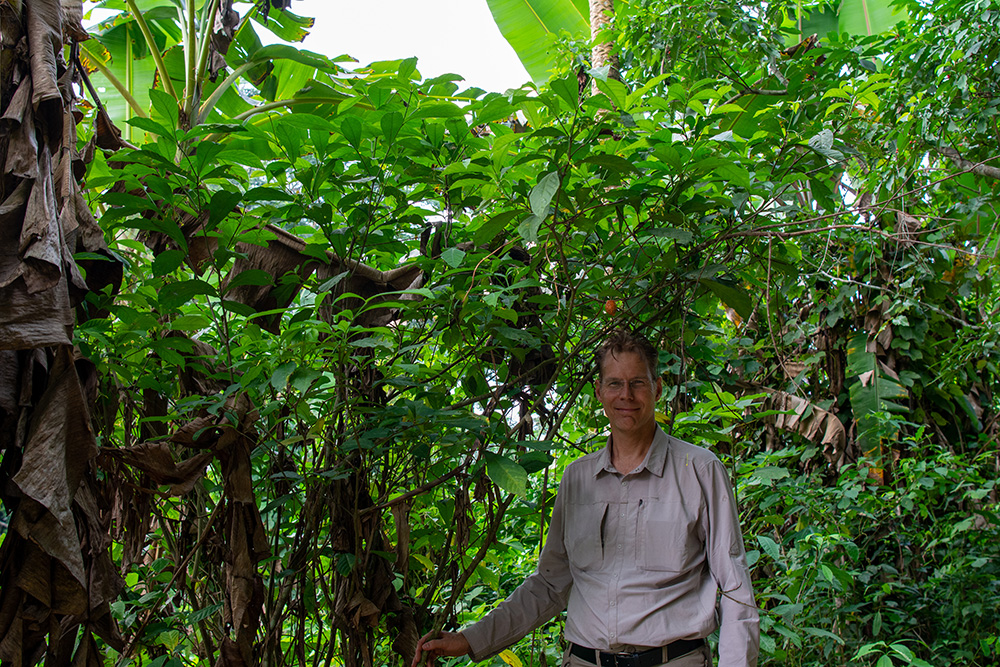
Iboga from Waka National Park, about 15 years old.
The main ceremony starts at different times depending on the tradition. Participants usually receive around 8 spoons of iboga, with deeper ceremonies like Dissumba involving significantly more. At most places, after consuming iboga, you are placed in front of a mirror for self-inquiry—a technique also used by Ramalinga Vallalar, a South Indian saint who achieved enlightenment. This process begins the dissolvement of the ego.

Fresh iboga with a little honey
During the mirror process, your mat is slightly covered with iboga rootbark, and you are engulfed by its energy. In Dissumba Bwiti, the ceremony continues until you lose consciousness, unlike at Ebando or most Mitsogho villages. After the mirror process, the energy intensifies, and participants lay down on mats. In some traditions, they are given the Bissembe (a musical instrument or objects). In Bwiti, nothing is given freely—you must actively "pull" it from the giver in a symbolic act of taking ownership.
This is followed by about 5 hours of Bwiti music and dance, guided by the Nima and supported by the village. This period brings about profound spiritual cleansing and awakening. The effects start within 45 minutes, with an increased heart rate and slowed vision. Participants may feel cold (or hot for those experienced with kundalini awakening), and energy waves, known as kundalini waves, begin moving through the body.

Mama Aline caring for the Banzi's while Ngombi harp music fills the room, guiding the process.
Deeper into the process, the mind projects into the real world, and dreams mix with reality. A humming sound, often called the Bwiti hummingbird, is heard, and time seems to slow down. These effects allow for the dissolvement of trauma and fear. Iboga works persistently to clear blockages, especially in the spinal cord (called sushumna in Indian traditions). In Dissumba Bwiti, participants may experience a "death ceremony," where they are taken into a void where everything shuts down.
The most intense part of the ceremony lasts about 6 hours, the time it takes for the rootbark to pass through the small intestines. After this period, the process calms but continues for another 24 to 26 hours. Fasting before the main ceremony makes the experience more intense, but at least eating lightly is recommended. However, drinking water is important as iboga requires hydration, though dry fasting is discouraged. During the ceremony, avoid drinking too much water or moving excessively, as both can induce nausea. Movement is typically limited, and walking can be challenging, but guidance is provided if needed.
The length of the process can be the most demanding aspect. After 24 hours of no sleep and intense processing, you may wish for it to end. However, trust that it will calm down, and try to embrace the process as much as possible. If the experience takes you completely out of reality or out of the body, the ngombi harp is played nearby to guide you back.

Bokaye playing the Ngombi
After the ceremony, you will rest for the next 3 days while remaining in the process. It is important to stay within the village, as you may feel normal but are still under the influence of the iboga experience. The guidance and safety of the village are crucial during this period. At the end of the 3 days, everyone gathers for Bwiti music and singing, culminating in a sound healing session with the Bwiti harp.

Following this, you will share your insights and experiences from the ceremony with the village and your Nima. The Nima will then bestow upon you a Bwiti name (Kombo) that reflects your journey during the ceremony.
Afterward, the Mayaya celebration begins—a rebirth celebration unique to Dissumba Bwiti. Unlike some Western interpretations, Mayaya is not another initiation but a joyous event marking your new life and induction into the Bwiti family. The celebration involves dancing all night with fire and music, centered around a large Etsemanga (a ceremonial candle). Participants consume 1 or 2 spoons of iboga to stay connected to the energy and remain awake. You will wear servaline genet fur (called Mousingi or civet cat fur) with red initiation clothing, symbolizing an open energetic system. Ritualistic dancing with fire is an integral part of the celebration.
Bwiti places a strong emphasis on community and social cohesion. Bwiti villages function as extended families, fostering communal support and belonging. Rituals and ceremonies are communal events that unite participants and create a profound sense of togetherness.
The musical instruments used during initiation and rebirth celebrations include the Ngombi (harp), Mungongo (string), Missandza (nuts), Tsoque (rattle), Ambundo (wind), Tambours Aussoumba drums (also called Bwiti Tam-Tam or Nkonjo or Mbejn) made with gazelle skin, Etsika (horn), and Obaka or Nkul (wooden sticks).
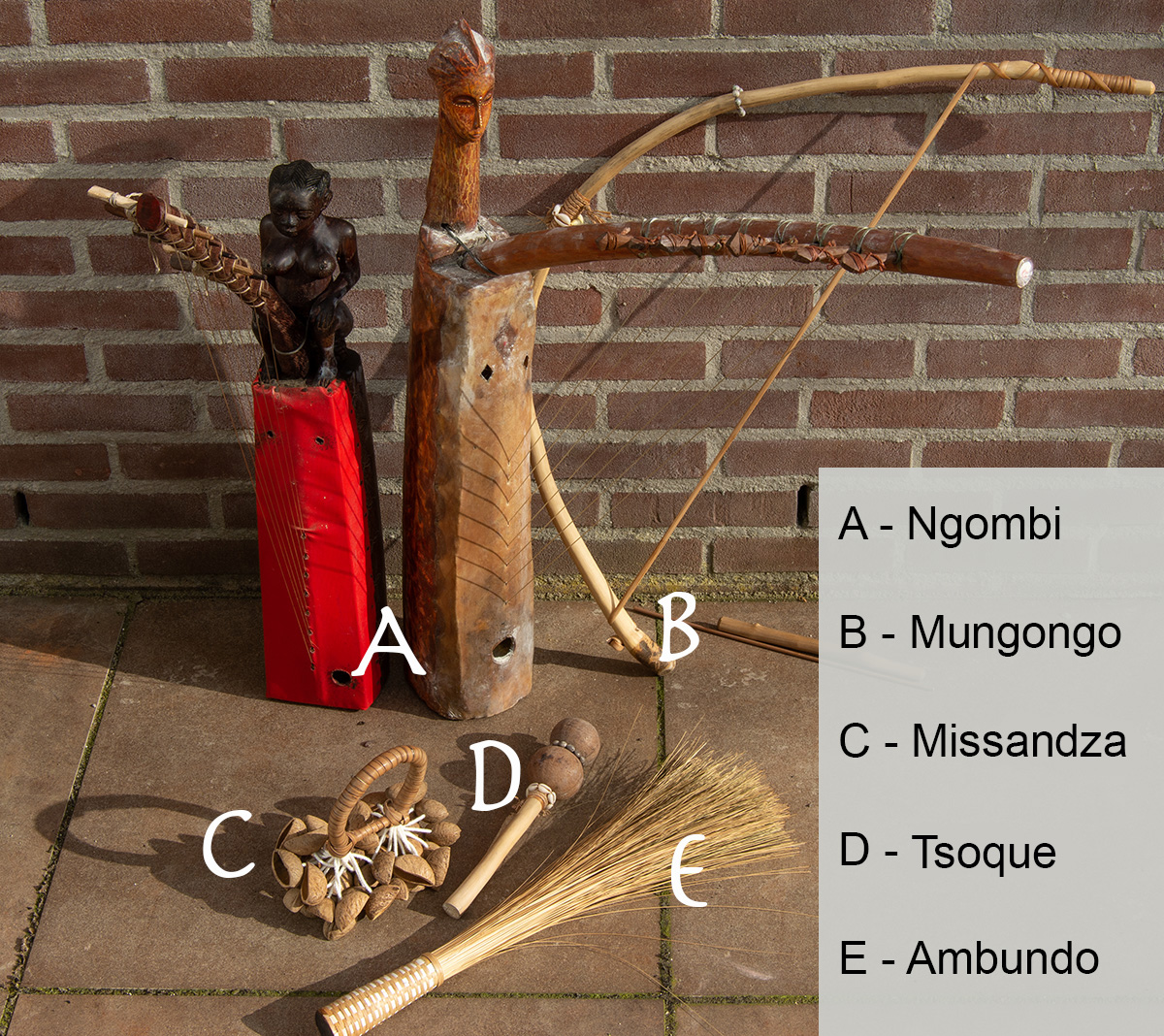
Ambundo is also known as Kombo or Mwendzu, the fly chaser.

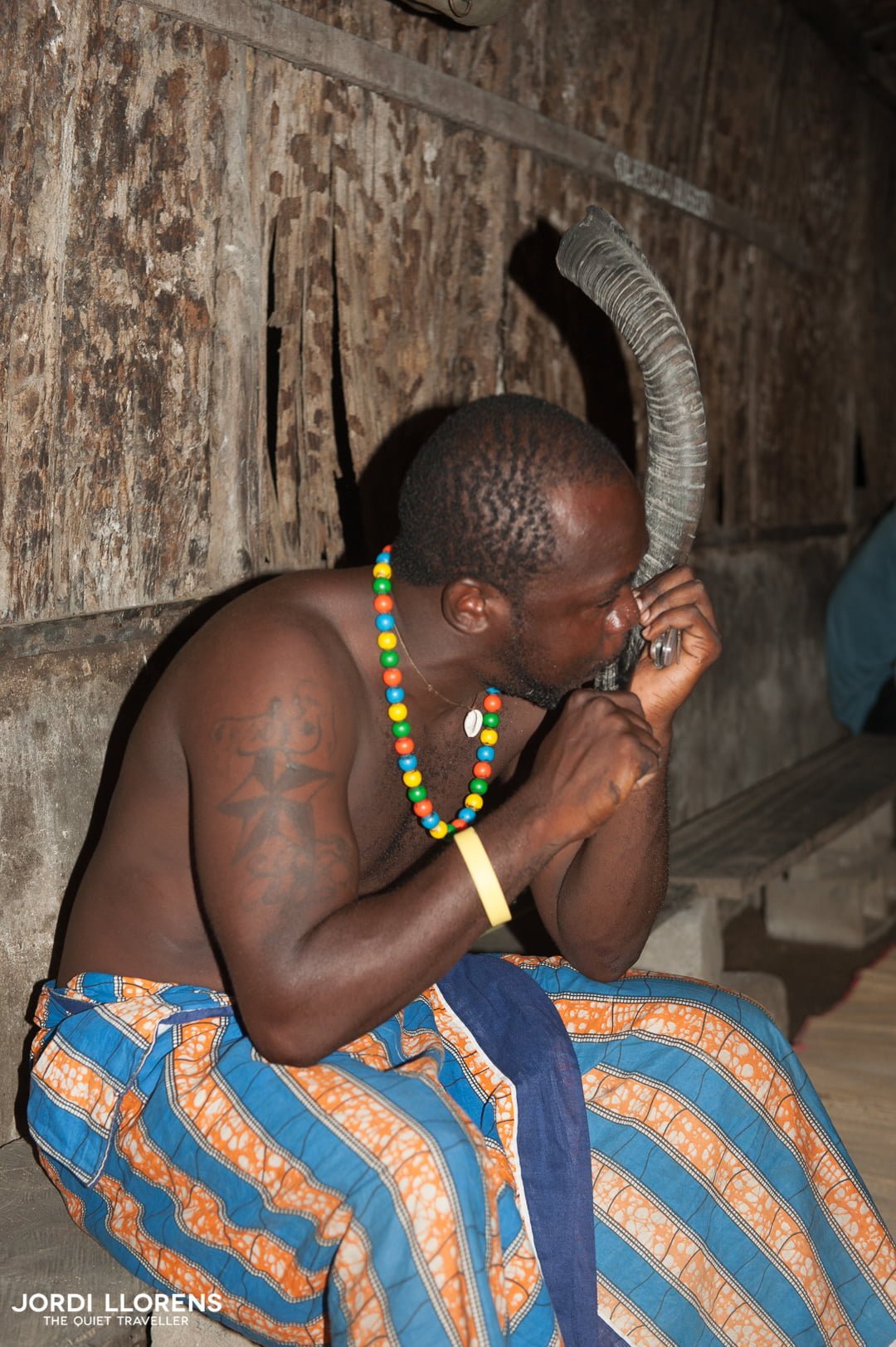


Bwiti ceremonies unofficially have 3 distinct levels. I say unofficially because in Gabon, there is only one main ceremony for participants, while only Nimas or Nganga (shamans) participate in multiple traditions.
The first level is the introduction ceremony, typically conducted in locations like Costa Rica (Anthony), the Netherlands (Celine), Mexico (Michael), Canada (Luis Makonza Da Silva), Senegal (Mot), or Portugal (Ryan and Steven). These ceremonies mimic the ones in Gabon but use significantly less rootbark (around 15 to 20 grams), sometimes given in flood doses (one spoon every hour for 5-6 hours). These ceremonies are less intense and serve as a good introduction to Bwiti.
The second level involves traveling to Gabon for the Missoko initiation at Ebando or the Elombo initiation offered by Mama Aline and other villages (see options here). While this may seem like a big step, the experience is safe, and the people are very welcoming. Air France provides daily flights to Gabon. A yellow fever vaccination is required, and taking Malarone or Artemisia Annua is recommended to protect against malaria (most people have no symptoms with these precautions).
The visa process is arranged through Mbolo Tours and costs €150 in advance plus €70 at the airport. Bring cash, as most ATMs in Gabon do not accept Mastercard (only one ATM at Libreville airport works), AMEX, or local bank cards from outside Africa. VISA cards tend to work better. You can contact different Bwiti organizations via WhatsApp for assistance.
- Mbolo Tours: WhatsApp +241 07644999
- Camille MP Services Benin: WhatsApp +33 678164959
- Medzime Assock: WhatsApp +241 07474708
- Minibus Gabon: reservation@gaboncar-entreprise.com
The third level is the master level, Dissumba, where participants consume over 300 grams of rootbark, sometimes up to 1 kg. This involves fresh rootbark, which numbs the taste buds, making it easier to consume. The Nima continues administering the rootbark until the participant no longer reacts to a needle sting—essentially reaching a state of complete surrender. This intense process allows for merging with the universe and life itself, as described in the eyes of Adumangana. However, this level is reserved for those well-known to the village, so it is essential to start with the normal initiation first.
Some Q & A about Bwiti
So let's talk about the Tabernanthe Iboga (aka Black Bugbane - Le Bois Sacré)

An iboga shrub at the entrance of the Motamba (Root of the Earth) Bwiti temple in Gabon
Iboga is a perennial rainforest shrub native to Gabon and Cameroon that can grow up to 10 meters tall. The cambium layer (see below) of the Tabernanthe Iboga root, at least 15 years old, is combined with self-inquiry to create the most powerful tool for awakening and developing kundalini. It is particularly effective at grounding, opening, and cleansing the nervous system, focusing on decalcifying and opening the pineal gland. Iboga helps realize the illusions of self ("I thought"), the world, and karma itself.

Kundalini can ignite with as little as 5 grams of high-quality iboga rootbark. The more you take, the greater the fire! It is arguably the most powerful spiritual ceremony globally, capable of awakening and dissolving karma in one Gabon ceremony. Iboga is one of the few herbs known to create new brain cells in the dopamine center and rewires the brain for stable awakening (Nima state). It decalcifies the pineal gland and clears stored karma like no other.
Unlike Ayahuasca or San Pedro, which only connect to one neurotransmitter, iboga connects to five main neurotransmitters (NMDA, nicotinic, σ-, κ-opioid, and μ-receptors) and remains active for weeks to months. It also reverses epigenetic aging markers, making it an unparalleled plant medicine.
Word of caution:
Never consume iboga alone. Avoid it if you have diabetes, liver problems (do a blood test to rule these out), or heart problems (get an ECG to check for QT irregularities). Strict dietary rules apply: abstain from alcohol, DMT, drugs, or antidepressants at least 20 days before and three months after a ceremony. Grapefruit juice is acceptable unless consumed during iboga’s influence. Cocaine and methadone use post-iboga have caused fatalities in those seeking addiction cures. Reduce antioxidants and caffeine post-ceremony as the body becomes more sensitive.
If you wish to try iboga alone, microdosing is the safest option. During a ceremony, ensure the sitter uses Bwiti music to maintain alpha brain wave frequencies, supporting the nervous system during intense experiences. Surrender to the process and accept whatever arises, especially in a full Dissumba initiation (Tobe si) in Gabon, which involves consuming 300+ grams of rootbark within 2 hours and experiencing a death ceremony.
In Gabon, you will choose your Tare (Bwiti Father) and Nana (Bwiti Mother), who will assist you throughout the ceremony. This is a great honor and an integral part of the Bwiti tradition.
It normally takes 30 hours, but if you are fighting something, it can take longer until you surrender! That is why in a ceremony, your Tare and Nana are there to help you. In this type of ceremony, the ego will not win but will try and fight for survival.
Make sure you are familiar with self-inquiry, as this is what iboga is all about—making self-inquiry go 10,000 times faster and finding the roots of the "I" like nothing else can. In Dissumba, this is less important as you will be taken over by the rootbark. Generally, in the north of Gabon, they use less iboga in ceremonies compared to the south.
The ibogaine treatment is entirely different and is conducted in hospitals for addiction treatment (many in Mexico). These treatments are extremely expensive and are not intended for spiritual endeavors, even though they sometimes happen. Additionally, they do not use the iboga rootbark but a purified extraction of iboga called PTA or pure white ibogaine, which lacks many spiritual aspects.
Scam Warning
Quality is very important, and you must be cautious about where and what you buy online. Avoid webshops that require payment through bitcoins, Western Union, bank transfers, or any other methods that do not guarantee refunds.
In other words, only accept PayPal or purchase from the following trustworthy websites:
These are the only reliable websites I have found so far. Since it is legal to sell iboga in Germany, it is the best place to purchase it. However, it is almost impossible to find iboga from Gabon due to the Nagoya Protocol. Yann Guignon from "Blessings of the Forest" has requested the Gabonese government to stop the export of iboga to prevent misuse.
"Blessings of the Forest" is a community interest company that works to preserve, research, and share knowledge about the medicinal plants and indigenous traditions of Gabon's forest people for the benefit of humanity. Hopefully, they will support the Bwiti family outside Gabon as well in the future.
Additionally, https://www.ibogaworld.com is also considered legitimate.
Be very careful with suppliers from Cameroon! You are almost guaranteed to be scammed.
Common tricks include asking for additional payments after the initial transaction, often accompanied by excuses. If you do receive something, it is usually the wrong product—either bark instead of rootbark, bark from too young a plant, or simply very weak iboga. Paying with bitcoins often results in receiving nothing at all.
Many people have been scammed by websites like:
- www.worldwideibogadelivery.com
- www.buytabernantheiboga.com
- www.ibogaplanet.com (now offline)
In Cameroon, a criminal group actively scams people interested in iboga. Reports suggest they are educated from middle school on how to scam people from the West. This is unfortunate but true.
How to test for iboga purity and how to extract to get TA and PTA?

Watch Dr. Chris Jenks explanation below:
Click here for a website that explains in detail the extraction procedure.
Pharmacokinetics

Iboga has the longest absorption lag time and by far the longest elimination phase. In comparison:
- **Bufo** has the shortest absorption and elimination time.
- **Ayahuasca** has a half-life of ~2 hours and an elimination phase of ~1 day.
- **Peyote/San Pedro** has a half-life of ~6 hours and an elimination phase of ~3–4 days.
- **Iboga** has a half-life of ~12 hours but an elimination phase lasting ~3 months, during which the ibogaine molecule continues rewiring the brain and nervous system, aiding ego dissolution.
It is this extended elimination phase that makes Iboga extraordinary. During the 3-month period, any meditation or spiritual exercise works 100x deeper and faster, even though you might not initially notice this.
In Dissumba traditions, participants were required to share their dreams every morning for 3 months to reveal their process. They were also asked to abstain from sexual energies during this time. With subsequent ceremonies, less iboga is needed to achieve similar effects as cleared areas remain open, allowing the rootbark to address deeper levels.
It is recommended to wait at least 6 months before undergoing another iboga ceremony. Doing so earlier often results in a blank state where little happens. Additionally, frequent ceremonies in a short span can lead to a kundalini crisis, which is highly undesirable.
Another remarkable fact about Iboga is that it is **not addictive**, and no link has been found between Iboga use and psychosis. On the contrary, Iboga is highly effective in helping individuals overcome drug addiction. See link here.

Dzogchen teacher Keith Dowman The Dzogchen teacher Keith Dowman recently wrote in Everything is Light that psychedelics can “provide an opportunity for synchronicitous moments of full recognition of the nature of mind,” but he went on to note that even though the clarity and unbound spaciousness of the nature of mind may unfold while on psychedelics, the challenge is that it is almost always accompanied by an onslaught of visionary, hallucinogenic, and otherwise psychedelic phenomena. Meaning, like dreams, do not dive into the visions and be taken by them—that is a waste of time, like taking dreams seriously. |

Lama Urgyen Rinpoche A quote from the great Lama Urgyen Rinpoche: “Don’t get involved in psychedelics unless you are willing to have your most deeply held beliefs—about you and your world—not only questioned but also shown to have no basis. Your belief systems are constructed by thoughts. Psychedelics are like a solvent poured on your beliefs. You may watch all of that dissolve. And although dissolving belief structures is the ultimate point of the dharma, doing so with psychedelics is not for every practitioner.” “The path of the Buddha leads us to an unnameable place. Psychedelics have the capacity to do that as well,” he says, “albeit in a more forceful way. In both cases, we may arrive at an indescribable place where we realize we cannot say anything definite about anything. That in itself is a type of freedom.” |
If you are into nootropics, be careful with supplements like neuro-mag, J147, C60, or similar, as these might excite the kundalini too much after an iboga ceremony, giving you the feeling of being on 10 cups of coffee all day. Iboga cleans your nervous system and body, making you more sensitive to these substances. This is the main reason people have actually died—because they were addicted to heroin, hoped to be free from it after a ceremony, but then used a full dose, which became an overdose.
If you have trouble sleeping after iboga (which is normal), magnesium with CBD oil can help. Also, using milk thistle supports the liver after a ceremony.

The Voacanga africana seeds create some visuals, as does the rootbark of the Voacanga, but it is not a replacement for iboga. There are no Indigenous tribes using this in rituals. It was a commercial lie that there are native tribes using this. There are no beneficial kundalini effects, so just stay away from this one. Below is a comparison of the molecules:

Ibogaine |

Serotonin |
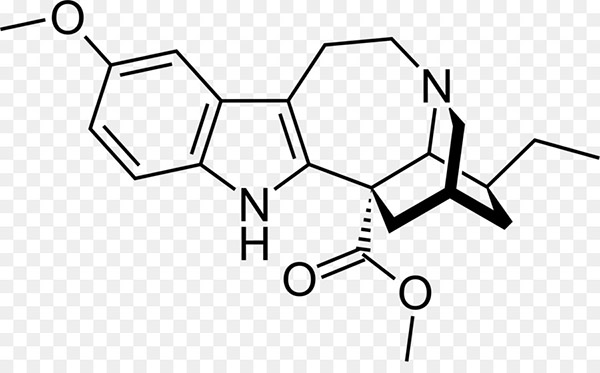
Voacangine |

Ervatamia orientalis leaves are toxic but should be the main source for ibogaine treatments (PTA) in extract form. Ibogaine is the pure extract from the plant, so all other substances are filtered out. As you do not kill the plant but just take the leaves, the main source for ibogaine anti-drug treatment should be Ervatamia orientalis. Because it is toxic, do not use it in raw form!
Anartia meyer from South America is another source of iboga, but not much information is available about it.

Tabernaemontana undulata is used as eye drops (Sananga) in, among other, Ayahuasca ceremonies. It also contains ibogaine. It is a great combination with iboga but, alone, will not produce anything comparable to a Bwiti ceremony.